After lots of discussion and planning, Lee Su-hyeon (“Vicky”) and I arranged for me to visit Hayang, her hometown in North Gyeongsang Province, to give a talk about Jikji and my NGO’s efforts to extricate it from the clutches of the French. Jikji, as the world knows, is the oldest extant document printed on movable metal type—proof that the printing press derives from East Asia and not Germany.
It was a Friday. I took the KTX down to Daegu and then a slow-moving train the rest of the way to Hayang. I was met at the station by Vicky and Chu Hyeon-ji. The latter, a faculty member at Hayang Girls High School, would serve as my translator during the two-hour event, held in the dance recital hall. This educational institution, which opened in 1966, currently has 611 students; as the name indicates, all are female. About one-third would be in attendance, along with a few teachers and a vice-principal. I handed my smart phone to Heo Na-young and asked her to take as many photos as she thought suitable.
By 1 p.m., we were ready to go. Vicky, who had stayed up all of Thursday night and most of Friday morning preparing a series of videos, spoke first. She introduced me, showed a clip from a TV show about the work of the Committee to Bring Jikji Back to Korea, and then I took the microphone. As agreed beforehand, I would speak for 10 or 15 seconds and then turn to Hyeon-ji. Standing at a lectern with a microphone of her own, she would convert my words into the Korean language, and then I would resume; the system worked quite well. I told the students (who had been given the bilingual Jikji historical timeline when they entered the room) all about this priceless document, its history from 1377 to the present, why it had to be returned from France and, of course, what we had done in that regard over the past 5 ½ years.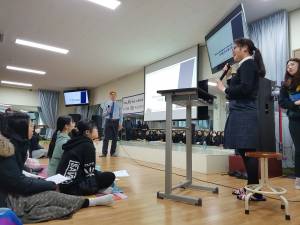
The students were attentive, relieving my worries of looking at a sea of blank and bored faces. Soon we came to the fun part: the quiz. I had prepared a series of questions which could be answered from having listened to my talk or by glancing at the timeline. Those who answered correctly were given a “Bring Jikji Back to Korea” T-shirt. I had brought 35 from Seoul. I asked the questions, Hyeon-ji translated, hands shot up, and answers were hollered with young, feminine energy. “Where was Jikji printed?” I asked. “Heungdeoksa in Cheongju!” I pointed and said, “Vicky, a T-shirt to that beautiful, black-haired girl, please.”
“How do we think movable metal-type printing got from Korea to Europe?” “The Silk Road!” (T-shirt….)
“Did Gutenberg invent the printing press?” I do believe that 50 students screamed “No!” simultaneously. We gave T-shirts to a couple at random.
“When did the Committee to Bring Jikji Back to Korea start?” They knew—the summer of 2013.
“Where did we usually go to get signatures on the petition?” “Gangnam Station, exit 10!”
I had left out many aspects of the Jikji story, but I took pains to emphasize the role of Dr. Park Byeong-seon, who located both Jikji (1967) and the Oegyujanggak archives (1975) at the slothful National Library of France.
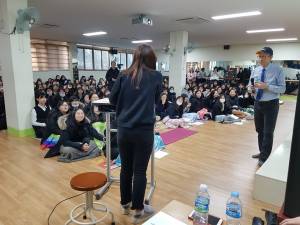 Soon all the T-shirts were gone. But nobody was left empty-handed since I had brought printouts of the cover of my soon-to-be-published book, “Jikji, and One NGO’s Lonely Fight to Bring It Home” (in both English and Korean) and 2019 calendars featuring those two covers—very tastefully done, I might add. In case the students wondered what they could do to help, I had come with two ideas. They could sign our petition, and they could write letters to the French ambassador to Korea and the Korean ambassador to France, Fabien Penone and Mo Chul-min, respectively.
Soon all the T-shirts were gone. But nobody was left empty-handed since I had brought printouts of the cover of my soon-to-be-published book, “Jikji, and One NGO’s Lonely Fight to Bring It Home” (in both English and Korean) and 2019 calendars featuring those two covers—very tastefully done, I might add. In case the students wondered what they could do to help, I had come with two ideas. They could sign our petition, and they could write letters to the French ambassador to Korea and the Korean ambassador to France, Fabien Penone and Mo Chul-min, respectively.
Next was a 20-minute question-and-answer session. It went quite well. Vicky asked me if I had anything else to add, and indeed I did. These were my words: “Girls, I urge you to believe in yourselves. Never doubt that you are smart enough or competent enough. Aim high! Whatever the challenge—academic or otherwise—you should tell yourself, ‘Yes, I can do it.’”
The program over, we took some group photos. The students took a number of their own. I cannot deny being pleased when several of them said to me, “Teacher, I respect you.” Others said more: “Teacher, I love you.”
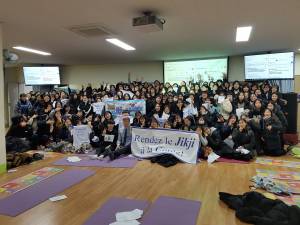
In mid-afternoon, Vicky, Na-young, Hyun-ji and a male math teacher took me to a hotel near Hayang Station where I put down 50,000 won and said goodbye. In the remaining hours of this memorable day, I walked up and down Hayang’s main thoroughfare, looked at some ancient graves, ate something called a “monster pizza,” spent an hour in a sauna and shopped in the city’s market. The population of Hayang is just over 40,000, and if the downtown area is at all indicative it’s a vibrant place. The economy seems strong, and I saw no shortage of young people.
The next morning, I got up and walked a few blocks to Paris Baguette. On the way, however, I encountered five rather boisterous young men in military attire. They were going to a “PC bang.” We talked for a couple of minutes, and they informed me that they were paratroopers—guys who jump out of airplanes and chase down enemies. The ROK army is no different from its American counterpart in 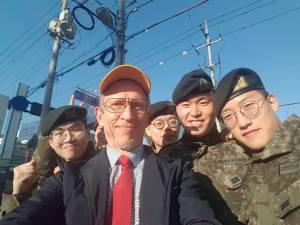 that Special Services is made of men who are tougher, stronger and more highly trained than typical soldiers. They were a bit surprised to hear my impromptu speech in which I stated admiration for them and what they do to defend South Korea. We took a group selfie before parting. They went off to play the kind of video games that I generally hold in low esteem, and me to the coffee shop.
that Special Services is made of men who are tougher, stronger and more highly trained than typical soldiers. They were a bit surprised to hear my impromptu speech in which I stated admiration for them and what they do to defend South Korea. We took a group selfie before parting. They went off to play the kind of video games that I generally hold in low esteem, and me to the coffee shop.
Half an hour later, Vicky and Na-young arrived. This allowed us the opportunity to go over what had happened the day before (a major success, we agreed). I learned of their college and career plans, and other personal matters. On the train back to Seoul, I read 40 pages of Sex among the Rabble / An Intimate History of Gender & Power in the Age of Revolution, Philadelphia, 1730–1830 by Clare A. Lyons.

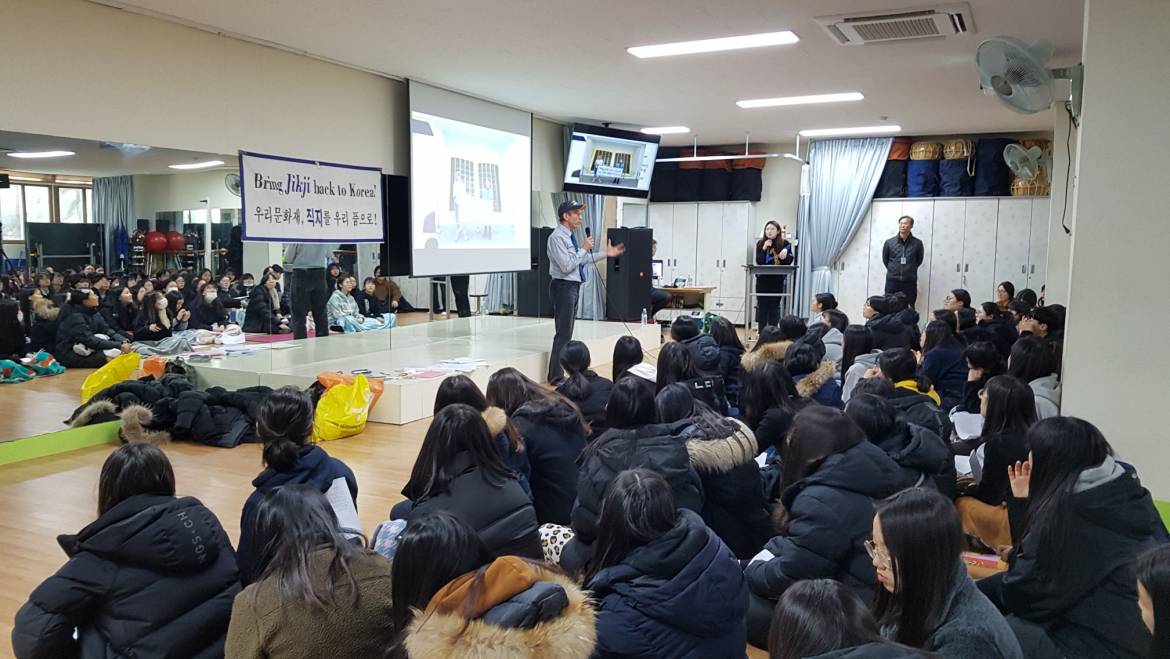
Add Comment